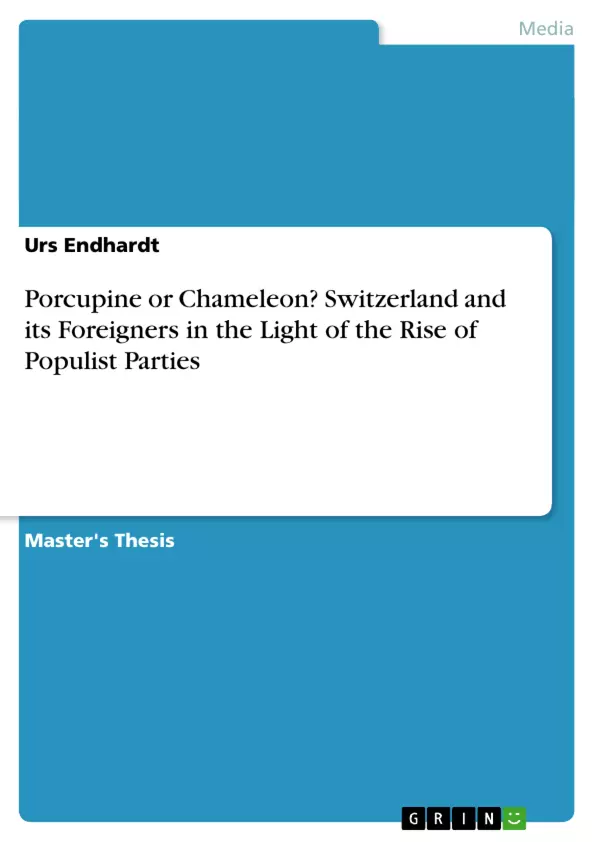My work only deals with the German-speaking part of Switzerland. Research in the French- and Italian-speaking parts would have been worthwhile, but also complicated due to a lack of language skills. This book chapter consists of five main chapters. The first chapter, the methodology, has an overview of its own.
The next part deals with the history of immigration in Switzerland since the end of the Second World War until present. It shows how the little country dealt with a huge influx of foreigners, but also examines the xenophobic movements and feelings that accompanied this development.
In the third chapter I shed light on unique features of the Swiss character, and how those traits influenced the contact to foreigners from all different nations. I will focus particularly on the role of language and regionalism. As I have a Swiss mother and have lived in Switzerland for a while, I have gained some expertise which helped me to further research this part.
An analysis of the election campaigns of the popular Swiss People’s Party (SVP) and the disputed methods which the party uses will be the chief subject of the fourth chapter. I examined the election programme of the party and compared it to reality. Furthermore, I was interested in the deeper reasons which lie behind the success of the disputed party, and therefore spoke to people who could tell me more about that.
Finally, I decided to widen my research and consequently travelled to seven different destinations in the German-speaking part of Switzerland. There, I examined the different everyday realities of Swiss and foreigners, witnessed a speech of a controversial SVP- politician, and went to places where integration works, but also to one where coexistence between Swiss and foreigners went horribly wrong.
- Arbeit zitieren
- MA Urs Endhardt (Autor:in), 2011, Porcupine or Chameleon? Switzerland and its Foreigners in the Light of the Rise of Populist Parties, München, GRIN Verlag, https://www.grin.com/document/215434



